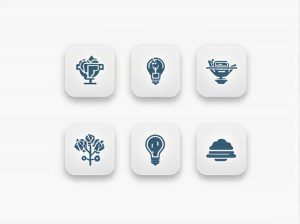A snowstorm is a weather phenomenon characterized by heavy snowfall strong winds and freezing temperatures. It can disrupt daily life causing road closures power outages and dangerous travel conditions. Snowstorms vary in intensity with some bringing light snow and others turning into severe blizzards.
In this topic we will explore the meaning of snowstorm its causes effects types and safety tips to help you understand and prepare for this winter weather event.
Definition of Snowstorm
What Is a Snowstorm?
A snowstorm is a type of storm that produces a large amount of snow over a short period. It often comes with:
- Low temperatures
- Strong winds
- Reduced visibility
Snowstorms can last for several hours or even days depending on weather conditions.
Difference Between Snowstorm and Blizzard
While both involve heavy snowfall a blizzard is more severe than a regular snowstorm. To be classified as a blizzard a snowstorm must have:
- Winds of at least 35 mph (56 km/h)
- Visibility reduced to less than 0.25 miles (400 meters)
- Conditions lasting for at least 3 hours
Causes of Snowstorms
1. Cold Air Masses
Snowstorms form when cold air meets moist air. If temperatures are below freezing the moisture turns into snowflakes instead of rain.
2. Moisture from Lakes and Oceans
Areas near large bodies of water like the Great Lakes experience lake-effect snowstorms where moisture from the water turns into heavy snowfall when it meets cold air.
3. Atmospheric Disturbances
Weather systems such as low-pressure systems and cold fronts create ideal conditions for snowstorms by pushing warm air upwards allowing snow to form.
Types of Snowstorms
1. Heavy Snowstorm
- Produces large amounts of snow in a short time.
- Can lead to road blockages and travel disruptions.
2. Blizzards
- Strong winds and reduced visibility make travel extremely dangerous.
- Can last for hours or even days.
3. Lake-Effect Snowstorm
- Common in regions near large lakes.
- Occurs when cold air moves over warm water picking up moisture and forming heavy snowfall.
4. Ice Storm
- A mix of snow sleet and freezing rain.
- Can cause power outages due to ice buildup on power lines and trees.
Effects of Snowstorms
1. Transportation Disruptions
- Roads become slippery and dangerous.
- Airports delay or cancel flights.
- Public transport may shut down.
2. Power Outages
- Heavy snow and ice can damage power lines.
- Households may lose heating and electricity.
3. Health Risks
- Hypothermia – Occurs when body temperature drops dangerously low.
- Frostbite – Damage to skin and tissue due to extreme cold.
- Accidents – Increased risk of falls and vehicle crashes.
4. Economic Impact
- Businesses close due to extreme weather.
- Damage to infrastructure requires costly repairs.
Safety Tips for Snowstorms
1. Prepare in Advance
- Stock up on food water and emergency supplies.
- Keep extra blankets and warm clothing.
- Charge electronic devices in case of power loss.
2. Stay Indoors
- Avoid unnecessary travel.
- Stay near a heat source.
- Use flashlights instead of candles to prevent fires.
3. Drive Safely
- Use winter tires for better traction.
- Keep an emergency kit in your car.
- Drive slowly and avoid sudden braking.
4. Dress in Layers
- Wear multiple layers of clothing.
- Cover exposed skin to prevent frostbite.
- Use waterproof boots and gloves.
5. Monitor Weather Updates
- Check local weather forecasts.
- Follow official warnings and advisories.
- Stay connected with emergency services.
Interesting Facts About Snowstorms
- The largest snowflake ever recorded was 15 inches wide.
- The deadliest snowstorm in history occurred in Iran in 1972 killing over 4000 people.
- Snowstorms can happen in unexpected places including deserts if temperatures drop low enough.
A snowstorm is a powerful winter weather event that can bring heavy snowfall strong winds and freezing temperatures. While snowstorms can create beautiful winter landscapes they also pose significant risks to transportation health and infrastructure.
Understanding the causes types and safety measures of snowstorms can help you stay safe and prepared during the winter months.



